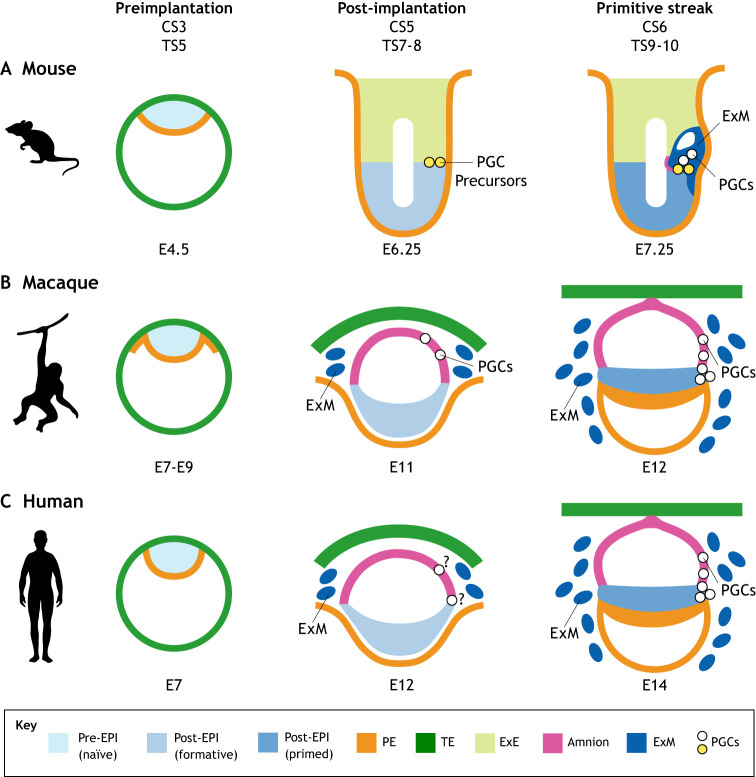Fig. 1.
Representation of peri-implantation embryo development in mammals. Mouse (A), monkey (B) and human (C) development. Formative pluripotency is described only in mouse and is therefore inferred in the other species. (A) In mouse embryos, the egg cylinder stages begin at Theiler stage (TS) 7. A pre-streak embryo is shown at embryonic day E6.25, which can be assigned to late TS8 with the specification of Blimp1+ primordial germ cell (PGC) precursors (yellow). Primitive streak formation begins at TS9, with mPGC specification from the precursors occurring late in TS9 and continuing in TS10. (B) In the monkey (cyno), cyPGCs are first identified at E11 [Carnegie stage (CS) 5c] in the amnion, with morphological evidence of primitive streak formation occurring in CS6. (C) In humans, ex vivo culture indicates that hPGCs can be identified before primitive streak formation at E12. ‘?’ indicates that the cell layer of origin is not yet known for humans. At CS6, cyPGCs are found in the posterior primitive streak. In the mouse embryo, bone morphogenetic protein 4 (BMP4) and BMP8b are produced from extra-embryonic endoderm (ExE) to induce mPGC specification. In the nonhuman primate embryo, BMP4 is reported as being produced by amnion cells and possibly by extra-embryonic mesoderm (ExM). In the human embryo, the cell of origin is not yet known, and the source of BMP for inducing PGC specification is also unclear. Supporting embryonic and extra-embryonic tissue types are depicted as: preimplantation epiblast (pre-EPI), represented in culture by the naïve state; post-implantation epiblast (post-EPI), represented by the formative and primed states; primitive endoderm (PE); and trophectoderm (TE).

